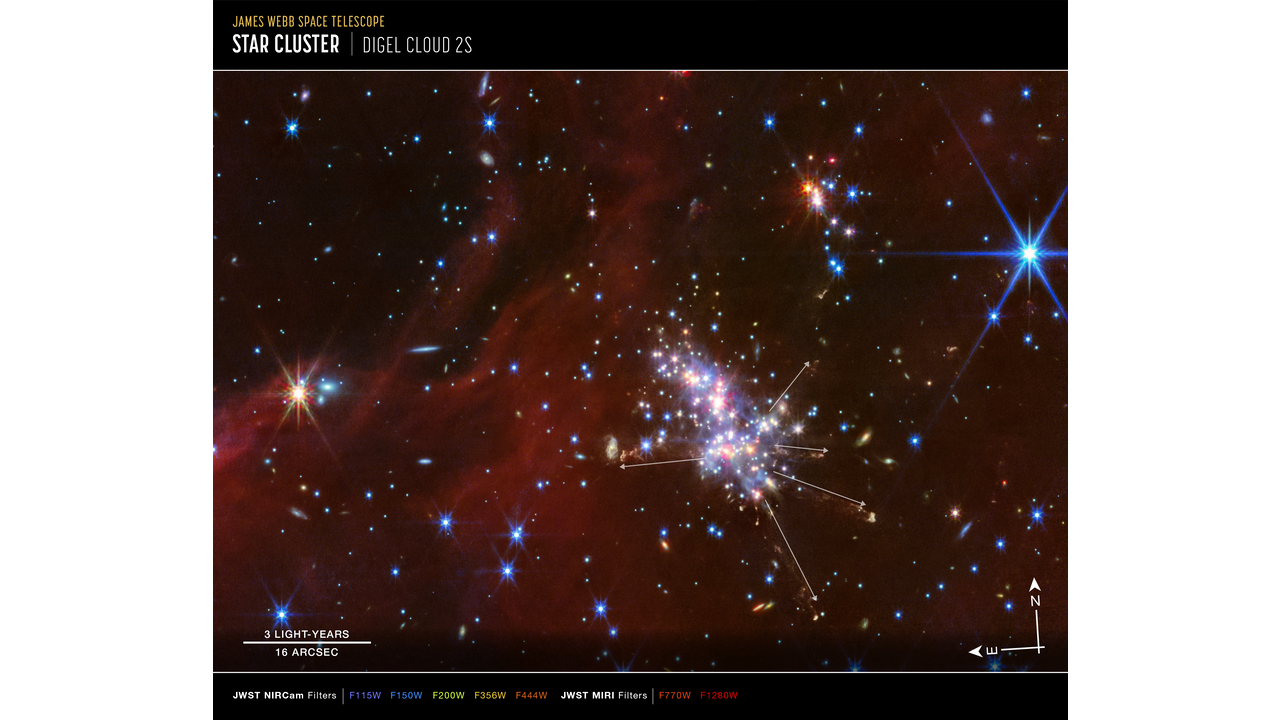Since launching on Christmas Day 2021, the James Webb Space Telescope (JWST) is no stranger to taking things to the extreme, such as observing early galaxies billions of light years away that existed when the universe was just a fraction of its current 13.8 billion year lifespan.
Now, this powerful space telescope is pushing it even further, to the much closer edge of our galaxy, the Milky Way. A team of astronomers is pointing JWST at the outer edges of the Milky Way, observing a region scientists call the “outermost galaxy.”
This region is about 58,000 light-years away from the center of the Milky Way, or “galactic center.” By comparison, our solar system is exactly halfway between the galactic center and the very edge of the Milky Way. The distance is only 26,000 light-years, so it’s no exaggeration to say that this new observation is “at the very edge.” This effort to push the boundaries of our galaxy has resulted in a stunning image of a star cluster in the midst of a “starburst,” an intense period of rapid star birth.
“Until now, we knew about these star-forming regions but had not been able to examine their properties in detail,” says Natsuko Izumi, a steam leader at Gifu University and the National Astronomical Observatory of Japan. It said in a statement“The JWST data builds on previous data that has been collected over time through years of observations from various telescopes and observatories. With JWST we can get some very powerful and striking images of these clouds.”
The star-birth regions of the Milky Way that the team observed using JWST’s Near Infrared Camera (NIRCam) and Mid-Infrared Instrument (MIRI) are enveloped in dense, vast collections of gas called “molecular clouds. ” The two molecular clouds in question, called Digel Cloud 1 and Digel Cloud 2, are several light-years long and have been imaged in unprecedented detail.
Among the cluster elements seen in the image are very young protostars — stars that have not yet gathered enough material from their pre-natal cocoons of gas and dust to trigger the nuclear fusion reaction in their cores that turns hydrogen into helium — that defines mature, or “main sequence” stars.
As any parent who’s ever had baby food in their hair can tell you, all babies are prone to tantrums, and these protostars are no exception. But these ejections aren’t Gerber’s strawberry-banana puree (yummy and good for your hair), they’re actually puffs and outflows of superheated gas called “plasma.” Evidence of these stellar tantrums can be seen in the new JWST images.
“In the case of Digel Cloud 2, we did not expect to see such vigorous star formation and spectacular jets,” Izumi added.

The Digel Cloud has a slightly different composition than other regions of the Milky Way: it lacks elements heavier than hydrogen and helium, which astronomers, somewhat confusingly, call “metallic”.
This metal-poor nature makes the Digel Clouds a good proxy for studying dwarf galaxies and understanding the early history of the Milky Way, before dying stars increased the metal concentration.The team looked for activity in four young star clusters within Digel Clouds 1 and 2, named 1A, 1B, 2N and 2S, respectively.
In 2S, astronomers observed a dense, active region of young stars shooting long jets of material from its poles. The team was also able to identify the presence of “subclusters” of stars in 2S.
“We know from studies of other nearby star-forming regions that when stars first form, they begin to eject jets of material from their poles,” said research team member Mike Ressler of NASA’s Jet Propulsion Laboratory in Southern California, who is the program’s principal investigator.
“What I found interesting and surprising in the JWST data is that there are multiple jets shooting out of this cluster in different directions. You can see different things shooting out all over the place, like firecrackers.”
This is just the beginning of JWST’s study of the Digel Cloud and the outer galaxies: the team plans to continue studying the outer galaxies, all the way to the limits of the Milky Way, to answer mysteries such as the relative abundances of stars of different masses within star clusters in the outer galaxies.
This will allow scientists to better understand how different environments affect the formation of different types of stars.
“We would like to continue studying how star formation occurs in these regions. By combining data from various observatories and telescopes, we can investigate each step in the evolutionary process,” Izumi concludes. “We also plan to investigate circumstellar disks in far outer galaxies. We still don’t know why their lifetimes are shorter than those of star-forming regions much closer to us. And of course, we want to understand the kinematics of the jets we detected with Cloud 2S.”
The team’s research Astronomy Journal.










